It all started in the early 1950s on the porches of the multi-level homes in the geography of Worcester’s Little Armenia: Chandler Street, Park Avenue, Austin Street and Belmont Street.
Reminiscing, Eddie Varteresian would say with a chuckle, “As kids, we used to play Armenian music on our porches, and the neighbors—whether Armenian or not—would love it in our little Armenia. We taught ourselves how to play.”
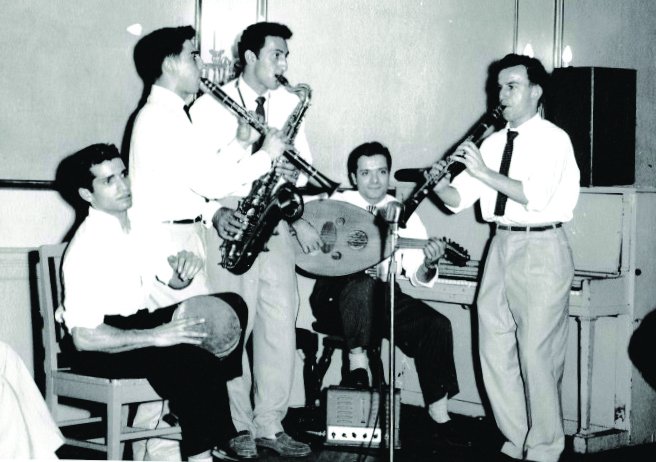
That was the start of what was to ultimately be the Aramites or Worcester Aramites band—named after the Worcester AYF chapter, the first in the US.
Kapriel “Kap” Kaprielian (clarinet and sax) started the band which ultimately included Varty Vartanian on dumbeg/bongos; Mal Soghomonian, oud; Nori Soghomonian, dumbeg; Jack Shemligian, sax; Larry Mardirosian, clarinet/sax; and Eddie Arvanigian on tricolor tambourine and vocals.
Following the Aramites, but virtually at the same time, was a younger group called the Gaidzags who ultimately joined the Aramites because Aramite members were drafted into military service.
Ultimately, Carnig Mikitarian, Levon Barsamian, Ed Varteresian and Pete Harootunian joined the Aramites and became one large musical spirit that played at dances, picnics, weddings and Olympics in the eastern region.
Gary Arvanigian (Eddie’s nephew) once observed, “The Aramites were the Rolling Stones of the 50s, early 60s. They played all over, beginning in Worcester, then New England, Mid-West, Canada and three Olympics in the 50s. They had fun as a band, and the many who attended their events over an approximately 10-year span had a ball. They were a much sought after band…the all stars of that time.”
Eddie would later provide vocals on Hachig Kazarian albums.
Barsamian still exudes the spirit and feeling of the time: “We were self-taught AYFers. Armenian music was in our souls. We were like brothers. We loved our experiences in many communities. Eddie’s tricolored tambourine reflected who we were as well as our name reflecting our Worcester chapter.”
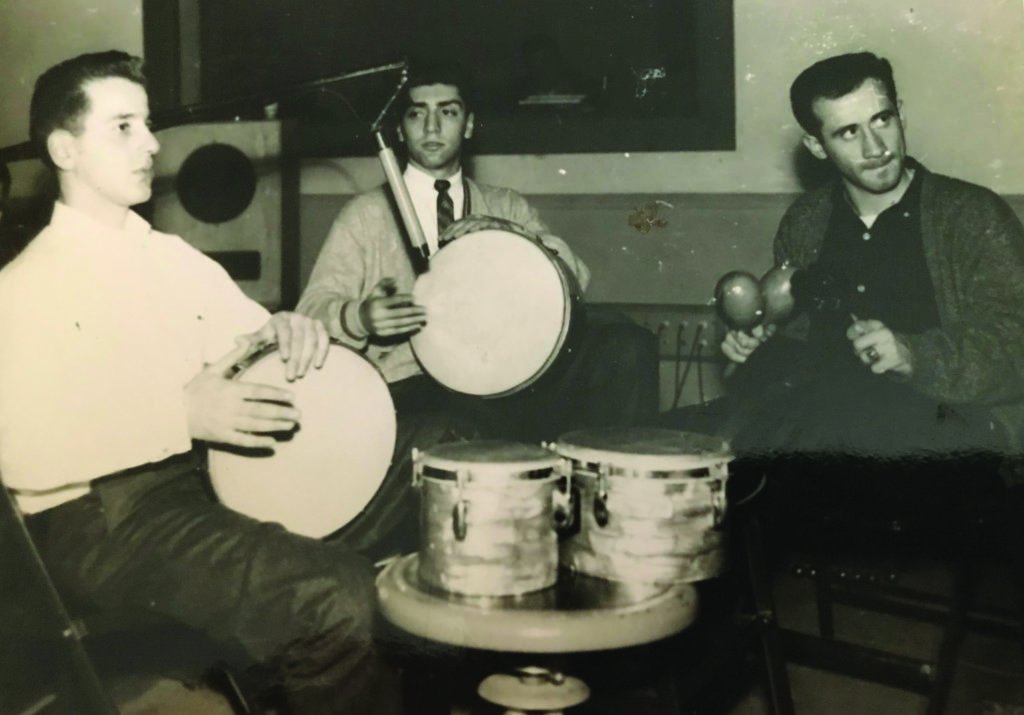
Over time, the Aramites recorded the LP “Hot Sands,” as well as individual 78 rpms “Meg Nyvatskov,” “Laz Bar” and “Aramite Bar.”
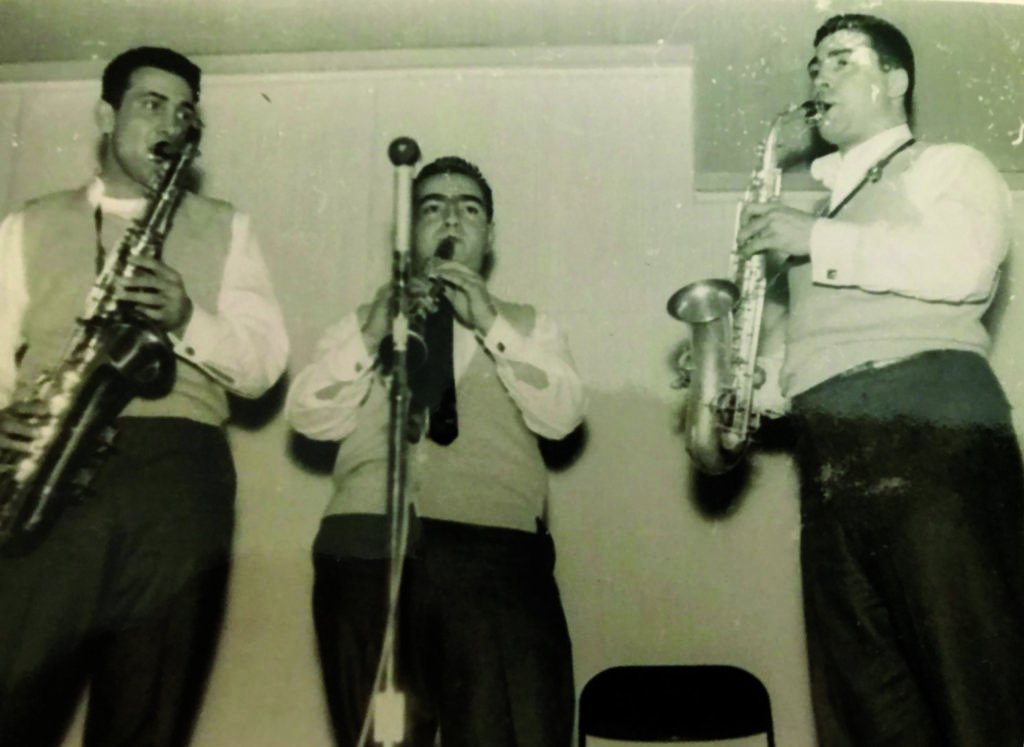
Barsamian started off playing dumbeg and then taught himself how to play an oud that his father bought him. After the Aramites, he was in demand to play with Mike and Buddy Sarkisian, as well as others in various New England clubs, weddings and dances.
Mikitarian (clarinet and saxophone) gained his musical interest from his father.
He took clarinet lessons, and by the age of 15 became a member of the Gaidzaigs and then joined the Aramites with Barsamian.
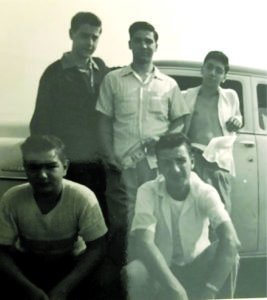
Thereafter, his soulful tones and fun personality were in demand playing with the likes of Harry Minassian, Bobby Sohigian, Zaven Donabedian, Leo Arzoomanian, Onnik Dinkjian, John Berberian and Kazarian.
With some 63 years of friendship, Kazarian notes of Mikitarian: “Carnig was a gracious partner in music. He brought fun to the gig. I enjoyed working with him countless times over the years.”
The signal song of the Aramites was “Zungalo,” a lively number sung only by Ed Arvanigian and no other vocalist of any band; it was the Ooster song, not like “Kale-Kale” or “Meg Nyvastkov.”
Gary Arvanigian explained the origin.
“My grandmother Nevart, along with Norair and Mal Soghomonian’s mom, created the lyrics about a young boy who loved Armenian music and good times. It was a portrait of their sons, the band members, if you will. My uncle Ed was the perfect one to sing it as he played his tricolor tambourine and sang his mom’s words. Talk about fun.”
Self-taught AYFers, hook-ups on porches, a tricolored tambourine—there was more than a decade of our music that played through the eastern region of the US. We remember. A great portion of the Worcester AYF and so many in many communities grew up with the sounds of the Aramites. Thanks, guys, for a lifetime of memories.
The Aramites were the sounds and spirit of Worcester, not to be forgotten.
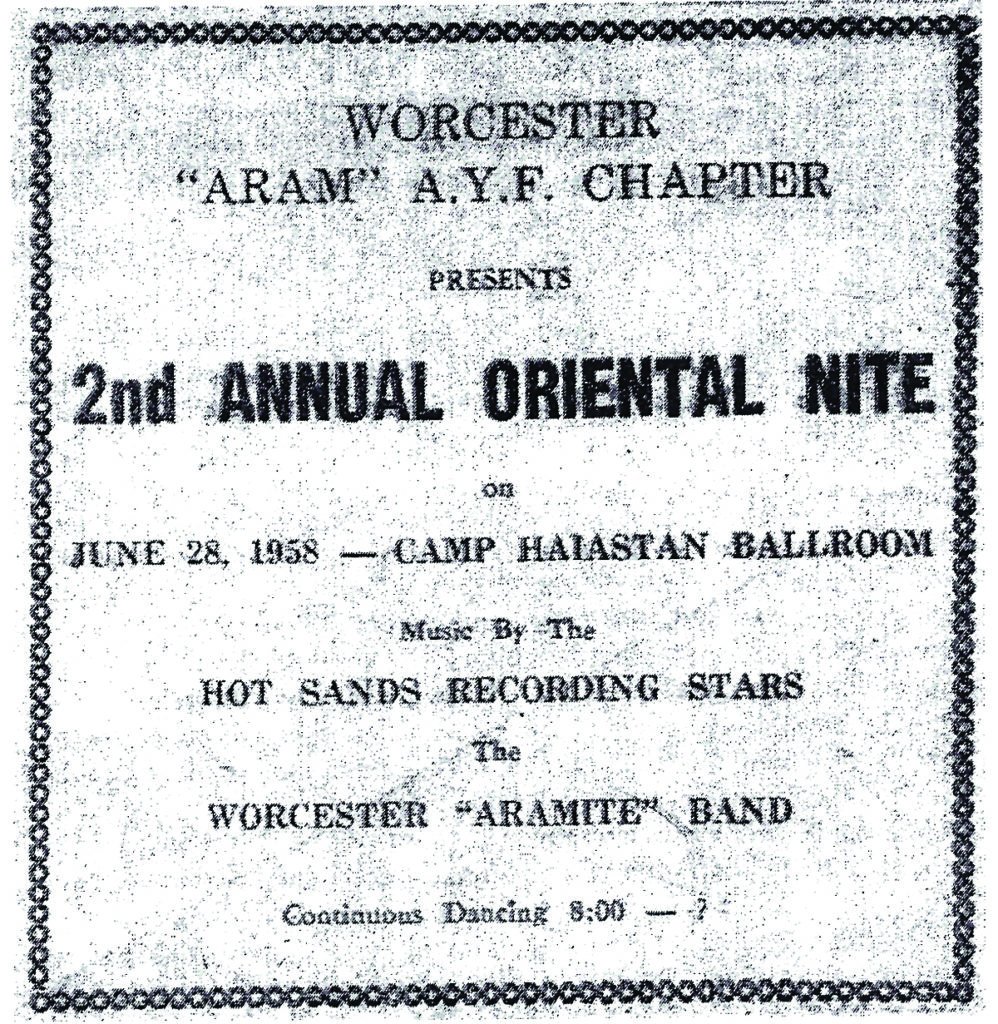
Author’s Note: Hachig Kazarian’s forthcoming must-have book, Western Armenian Music from Asia Minor to the United States, carries a great deal of detail about the Aramites, as well as other bands who have played in the United States. Some of the pictures with this article are also in the book.


I am sure that I took the photo of the original Aramite band. Great article!
Albert Der Parseghian (Watertown Gaidzag Chapter)
Al:
Thanks for the comment.
There may be an extra photo or two in the print version of the WEEKLY.
Harry
Do you still play. Are you for hire?
Thank you for all the memories. I just came across a picture of the Aramite Band from 1947 playing at Rhodes-on-the-Pawtuxet, Cranston, RI for an anniversary of the Armenian Radio Hour with Russell Gasparian. It has the entire band on stage. Also found the Aramite records (78’s) and Hot Sands. They were a great band and loved hearing them play. Providence A.Y.F.
Here it is, but I can’t seem to post photos here, so posted here:
https://www.facebook.com/KennethMartinPhotography
Ken
1950s/60s/70s Armenian Record Album Covers
If you are Armenian, were around in the 1950s, 60s, 70s, and lived anywhere east of Granite City, Illinois and/or Bettendorf, Iowa, you probably had one/some/all of these albums in your record collection. https://www.facebook.com/media/set/?set=a.10220976851999067&type=3
Harry terrific memories of the olden days. I can remember always trying to be the first one on the dance floor when the ARAMITES PLAYED…….Nor shall I forget my first day of camp and the nurse being Olhoudjian………such great memories.
loved every moment shared with so many names that you have mentioned……….and ok Worcester was the best, but hey I was a member of the Watertown Gaidzag so can we say “we are second best”…….NO, because every single AYF Chapter were special…..😘
Dear Mr. Derderian,
Excellent article – thank you! I would like to add a note about the beloved song “Zungalo”. There is a parallel song dating back into the late-1800s called “Jharjharoom” which was sung in Kharpert and in the surrounding areas when the bride was being escorted through the town or village to the church for the wedding. Traditionally, the ankles of the bride were adorned with silver rings which had little bells attached to them, and as she walked, there was the sound of “jharjharoom” heard from the shifting bells; the word “zungalo” refers to the little bells. The lyrics sung before the Genocide in the dialect around Kharpert are as follows:
Eygan danoghnit, zungalo. (2)
Atchki hanoghnit, zungalo. (2)
(refrain)
Mi lar, harsnoog, mi lar
atchkerut garmurvin;
mi lar, harsnoog, mi lar
kez buzdig garkoghin.
They have come to take you, “zungalo”
They are the ones who are wishing you well (literally in Armenian, “atchkit looys”, light in your eye)
Do not cry, little bride, do not cry!
your eyes will turn red;
do not cry, little bride, do not cry!
because today is your little wedding day.
Alooj em kagher, zungalo
Vodit yem taper, zungalo
etc.
I have picked little crab apples (“alooj” is a small red fruit, akin to crab apple)
I am casting them before your feet.
etc.
Ganantch momerov, zungalo
garmir solerov, zungalo
etc.
Holding green candles (as a sign of hope and happiness)
wearing red slippers (as a sign of the luxury of the bride)
etc.
The Aramite Band’s renowned 78 rpm recording of this traditional wedding song remains one of the classics of our Armenian folklore. Thanks to my parents and grandparents, I grew up listen to it with great admiration.
Thank you for the article and for the treasured photographs.
“Tzaynernit anusbar!”
Great article…so important to preserve these memories. I’m grateful to have been part of it.